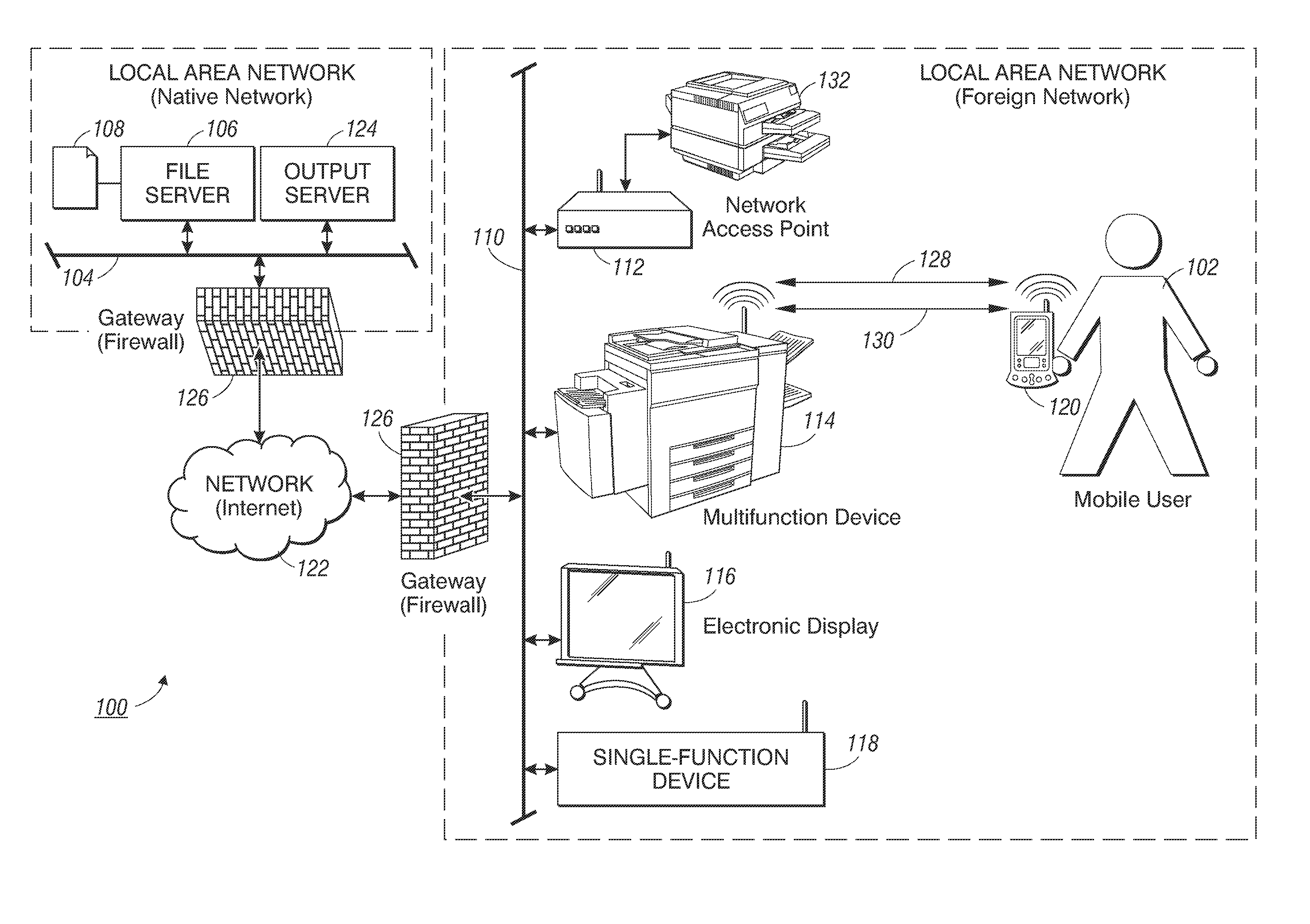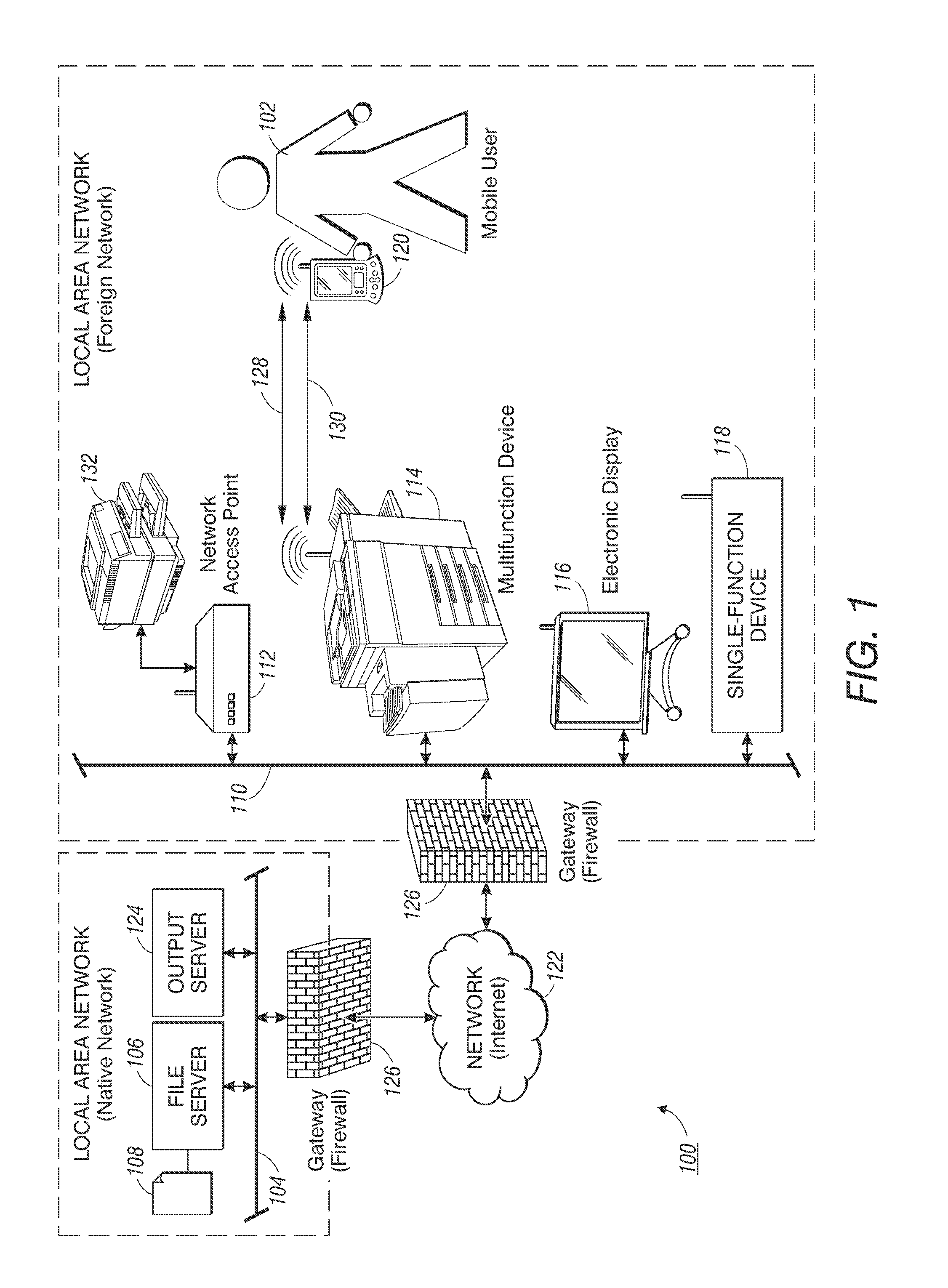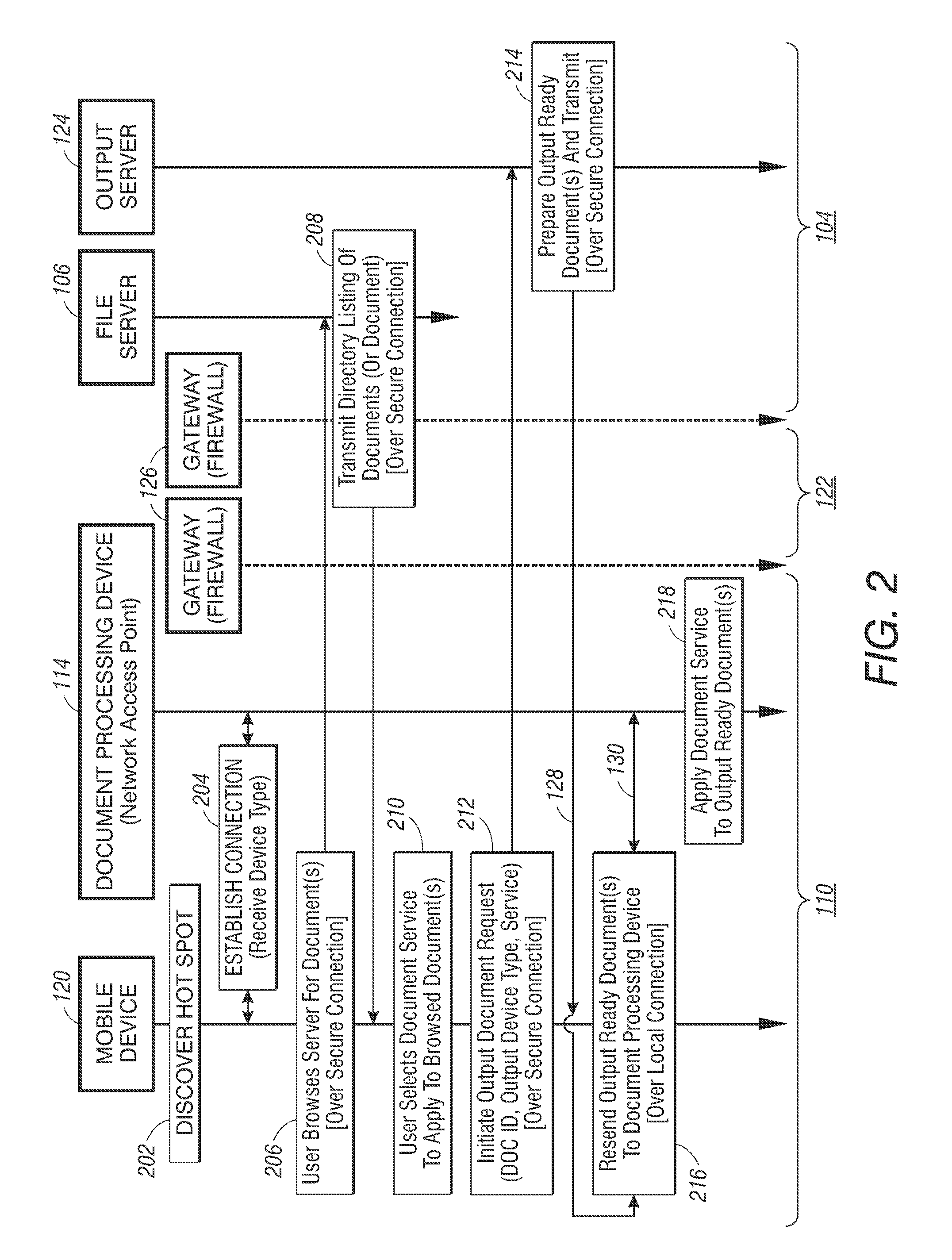Method and apparatus for controlling document service requests from a mobile device
a mobile device and document service technology, applied in document management systems, digital output to print units, instruments, etc., can solve the problems of document access in real time, limited storage capacity, and limited document size and number on mobile computing devices
- Summary
- Abstract
- Description
- Claims
- Application Information
AI Technical Summary
Benefits of technology
Problems solved by technology
Method used
Image
Examples
Embodiment Construction
[0034]FIG. 1 illustrates an operating environment 100 for carrying out the present invention. The operating environment 100 is one in which a mobile user 102 is a fully authenticated registered user (e.g., having a defined set of access rights) of local area network 104, otherwise referred to herein as the mobile user's native network 104. The mobile user 102 has, for example, access rights to file server 106 that is adapted to store in the user's directories documents such as document 108.
[0035]In one embodiment of the operating environment 100, the mobile user 102 is physically proximate to local area network 110, otherwise referred to herein as the foreign network 110 that is remote from the mobile user's native network 104. Generally, the mobile user 102 is given a very limited set of access rights in the remote network 110 (e.g., guest privileges), but sufficient for example to access the Internet 122 through the foreign network's gateway 126, which may ...
PUM
 Login to View More
Login to View More Abstract
Description
Claims
Application Information
 Login to View More
Login to View More - R&D
- Intellectual Property
- Life Sciences
- Materials
- Tech Scout
- Unparalleled Data Quality
- Higher Quality Content
- 60% Fewer Hallucinations
Browse by: Latest US Patents, China's latest patents, Technical Efficacy Thesaurus, Application Domain, Technology Topic, Popular Technical Reports.
© 2025 PatSnap. All rights reserved.Legal|Privacy policy|Modern Slavery Act Transparency Statement|Sitemap|About US| Contact US: help@patsnap.com



